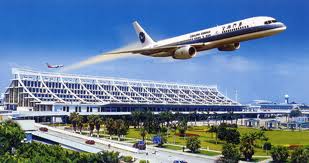
| Dong Nai to clear 21,000 ha for new airport infrastructure | |
Major industrial province Dong Nai has announced plans to clear 21,000 hectares around the proposed international airport, expected to the country’s biggest, for related infrastructure facilities.
Land in three communes in Cam My District and seven in Long Thanh -- after which the airport is named -- would be cleared for new residential and urban areas, industrial zones, research institutes and international service centers, according to a plan that has been submitted to government, Tuoi Tre newspaper reported. The Dong Nai Construction Department, which worked on the plan, said it had consulted the Ministry of Construction’s Rural Urban Planning Institute and Australian experts. It said, based on the experience of other countries, it decided the airport needs to be accompanied by consistent traffic, industrial, and service networks to help develop the economy. Roads will be built to connect the airport with the southern beach town of Vung Tau and Ho Chi Minh City, as well as to the expressway between Ho Chi Minh City and the central resort town Nha Trang. More than 5,720 hectares to the north of the airport will be earmarked for housing for staffs and displaced people, service centers, and a green area. An international transit service center will be built to the south of the airport near the coastal province of Ba Ria –Vung Tau, together with auxiliary industrial zones, plantations, and orchards on 4,400 ha. A 11,000-hectare area to the northeast and southwest where runways will remain farmland though a warehouse will be built there. Ly Thanh Phuong, deputy director of the province’s Department of Construction, said one problem is that the province is an industrial one with a large population and the clearing homes and workplaces could cause conflicts. But he said around half of the working population in the 21,000-hectare area would be needed at the 5,000-hectare airport when it begins operation in 2020, five years after construction is planned to start. Long Thanh airport was approved in 2011 at a cost of US$6.74 billion. It will be Vietnam’s ninth international airport, and is expected to handle 100 million passengers and five million tons of goods every year. | |
| Thanh Nien News |
